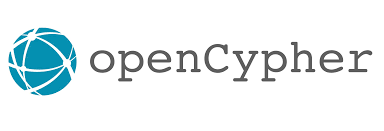Graph Writing Tool
Write your graph model to any database
The freedom to choose the database that works for you
The Graph.Build Writer can publish your graph model and data from the platform into any Semantic/RDF or LPG (Labeled Property Graph) database. You can choose the database to use now, perhaps you already use one, and if you change your mind in the future that's a simple change when using Graph.Build.
If you are used to database ETLs then you can think of the Writers as being database connectors for a graph ETL.
Don't be tied to one graph database vendor
LPG & RDF Compatible
Update Mode
Insert Mode
Horizontally Scalable
Graph Database Compatibility
As standard, the Writers are compatible with any graph database that supports any of the three most popular graph query languages - Those being Cypher (OpenCypher), Gremlin and SPARQL.
To look at specific examples or to check your use page, please consult our graph database compatibility page.
Supported Query Languages
Cypher
Cypher is a query language specifically designed for querying and manipulating data in the graph database Neo4j. It provides a simple and expressive syntax for pattern matching, traversal, filtering, and aggregation. Cypher uses ASCII art-like notation to represent patterns in the graph, making it easy to understand and write queries.
Gremlin
Gremlin is a graph traversal language developed as part of Apache TinkerPop™, the open-source graph computing framework . Gremlin is designed to be a general-purpose graph query language, providing a flexible and extensible syntax for traversing and querying graph structures. It supports various graph operations, including filtering, mapping, aggregation, and pathfinding.
SPARQL
While SPARQL is primarily known as a query language for RDF data, it can also be considered a graph query language. SPARQL allows users to express graph patterns and perform queries that traverse and explore relationships in an RDF graph. It provides powerful features for filtering, joining, grouping, and aggregating data, making it suitable for querying and analysing graph-like structures.


What if I don't have a Graph Database Yet?
This isn't a problem. Writers can be added to your platform implementation at any time. In fact, you can use them during your graph database selection process to test performance across different vendors using your own graph model.
If you don't want to load your model into a database then Graph.Build allows you to export or download your model as an RDF file for semantic graph models or nodes and edges CSV files for property graphs.